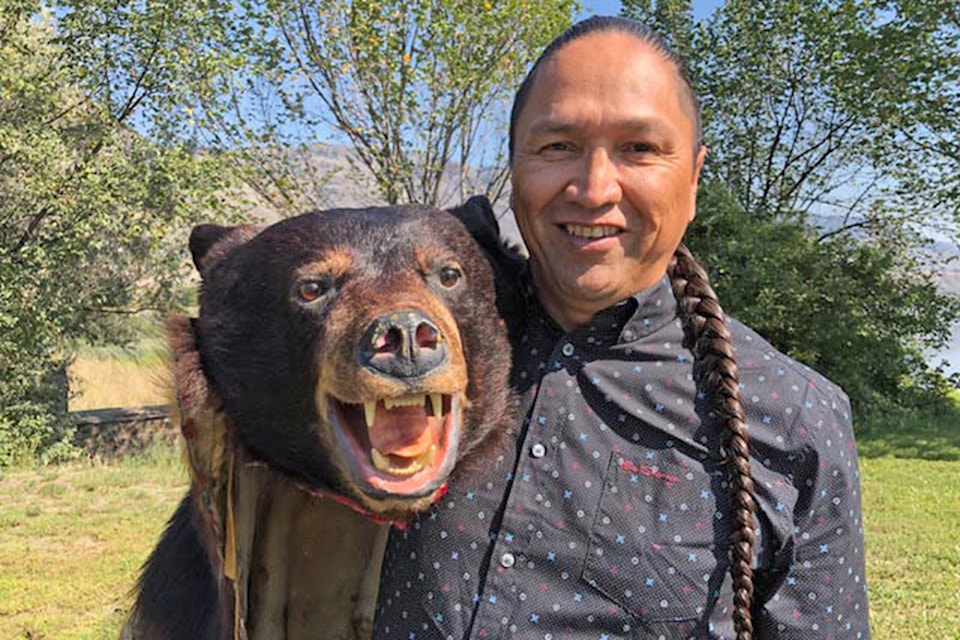Frank Antoine is no stranger to tourism promotion.
As chair of the Thompson Okanagan Tourism Association (TOTA) and with 12 years of experience at Quaaout Lodge, Antoine is well-suited to his new role as co-ordinator of the Shuswap Indigenous Tourism Strategy. He is also on the Splatsin Economic Development Board, is a member of the Adams River Salmon Society and in his entrepreneurial life has his own company, Moccasin Trails.
A member of the Shuswap Nation who calls Bonaparte near Ashcroft home, Antoine says TOTA is well aware of the increased interest in Indigenous tourism, referring to it as “biosphere.”
Biosphere is a responsible tourism system (RTS) certified by the Responsible Tourism Institute, an international accreditation body that maintains a memorandum of understanding with the United Nations Educational, Scientific and Cultural Organization (UNESCO), is affiliated to the World Tourism Organization (WTO), and is a member of the Global Sustainable Tourism Council (GSTC).
“It’s a new word for what we (Indigenous people) have practised for generations,” Antoine says, noting humans are not at the top of this model. “It’s not just about the environment, but also care for the animals and land; the land, the animals and the people, that’s the chain of how we survived.”
Antoine says Indigenous communities are now starting to see how they can benefit from tourism, particularly since culture itself forms the lifestyle.
Related: Shuswap trails excel with group guidance
“They don’t have to follow certain rules on how they present their culture to the public as it is basically their traditional teachings,” he emphasizes. “What tourism or business calls a product, in traditional culture, it’s a place.”
This concept of tourism changes the mindset of the elders and leaders, Antoine says, noting education is key.
“World visitors and local community members want to learn about it and we share who we are,” he says, noting for Indigenous people, the new tourism offers an awakening. “It’s getting our voice back following the history our generations before us endured, and we’re now starting to have a voice and showing our ways in our traditional territories. We’re slowly trying to get back to the ways our people shared.”
Antoine says he is currently working with Neskonlith, Adams Lake and Splatsin bands and is hopeful Little Shuswap Lake Indian Band will come on board to develop a tourism strategy. That band will form the basis of a case study because of its success in providing Indigenous cultural tourism over the past 25 years – including the highly successful Quaaout Lodge.
He will start the process by reaching out to elders and leaders of each of the bands to find out how they would like their community to be represented before sharing with the broader Indigenous communities.
“I want to listen, but then let’s fast track this,” he says.
Related: B.C’s Indigenous tourism takes centre stage in Chilliwack
Antoine says the initiative will include entrepreneur and tourism and industry training, artisan inventory and marketing, increased cultural presence, development of a committee to develop more indigenous events and creation of protocols that work for the Indigenous community.
The Ministry of Forests, Lands, Resource Operations and Rural Development has provided $94,670 from the Rural Dividend Program to Community Futures of the Shuswap, who will oversee the two-year project. Community Futures, Shuswap Tourism and the Splatsin, Adams Lake and Neskonlith bands have also contributed to the initiative as have others.
“The stakeholders contributed $24,500 in cash and in-kind contributions for the project,” says Rob Marshall, executive director of Community Futures of the Shuswap, noting the funds cover the costs of all the pieces required to build a strategic plan. “Frank is very well-known in the First Nations community, has a solid reputation and is highly regarded in the Shuswap.”
@SalmonArm
barb.brouwer@saobserver.net
Like us on Facebook and follow us on Twitter
